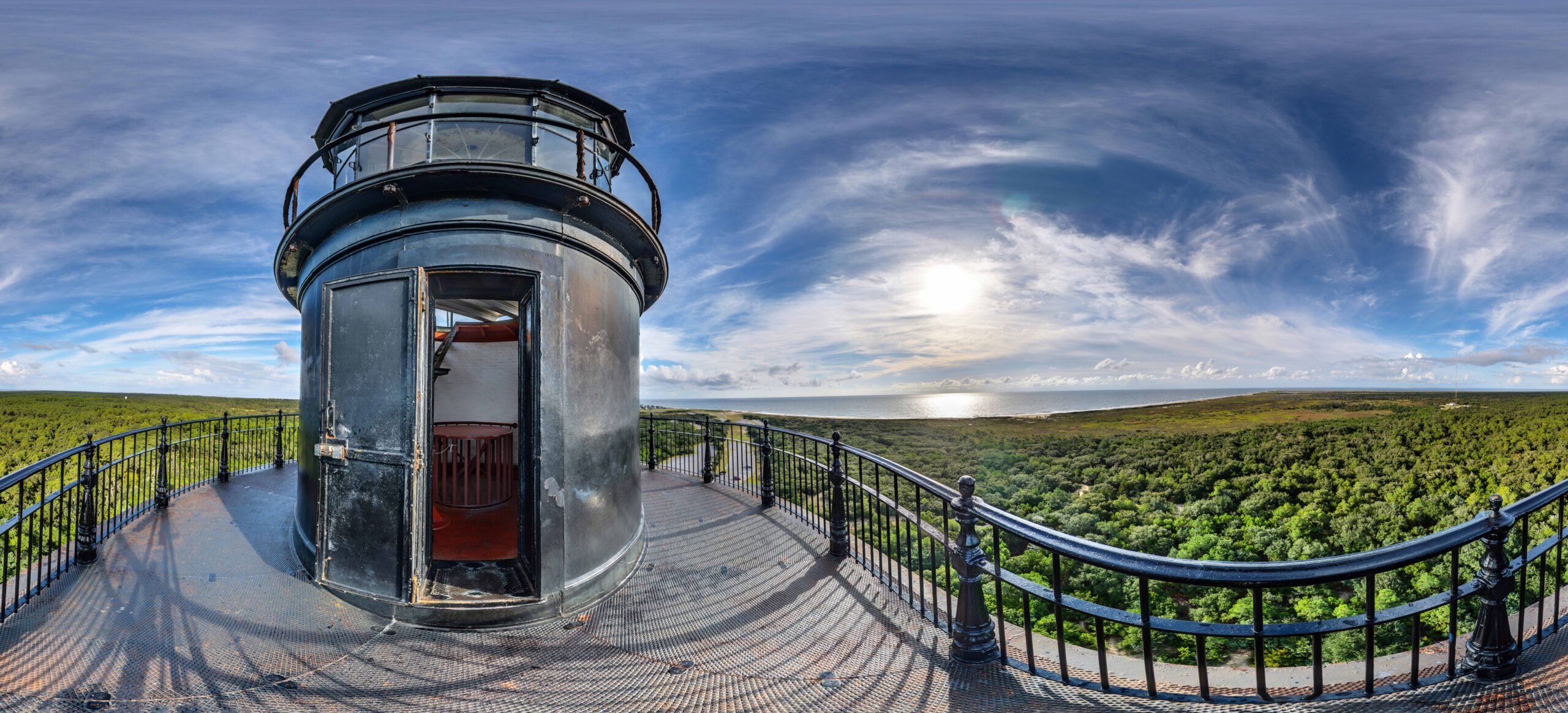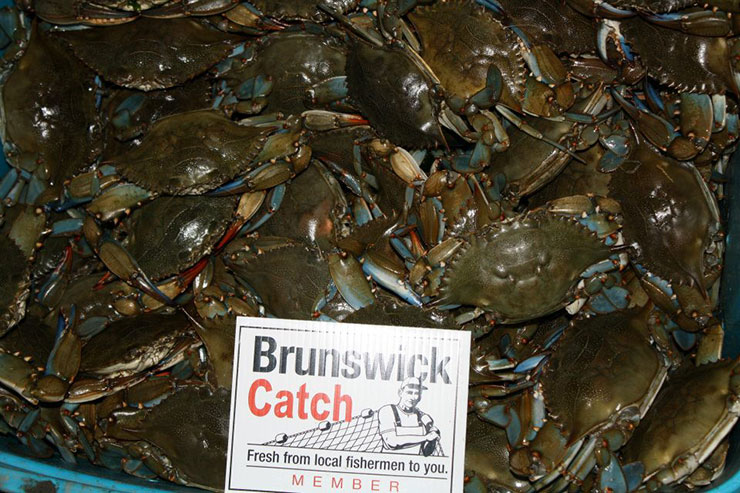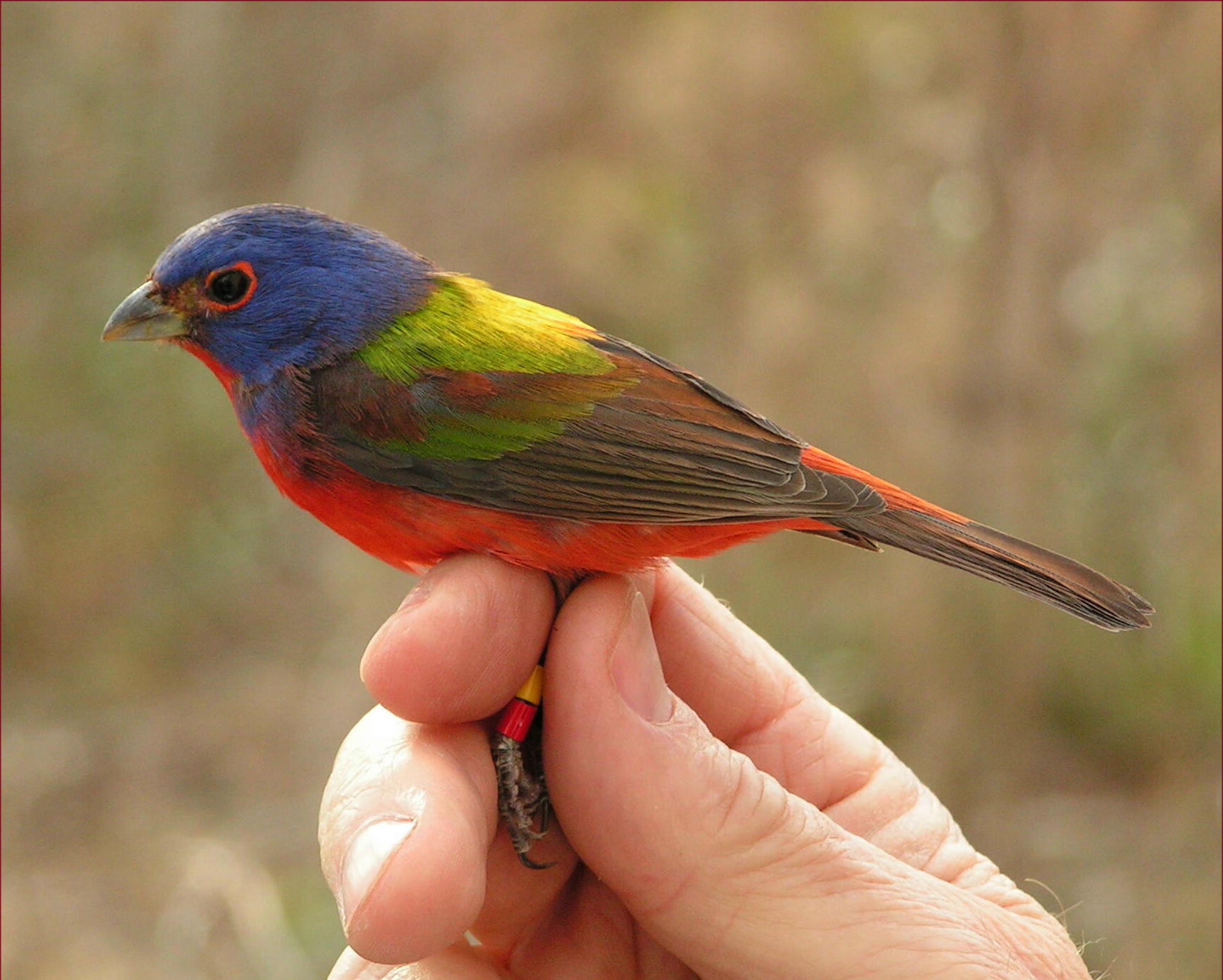In a sandy area behind an old Chicamacomico lifesaving building in Rodanthe, Terri Kirby Hathaway and several teachers stand behind a short-barreled cannon.
They demonstrate how to fire the rope line from the cannon mounted on a wooden carriage or “Lyle gun.”
Hathaway, North Carolina Sea Grant marine education specialist, runs the shot line to a porch simulated to represent a mast of a sinking ship.
After the shot line is secured to a post, other teachers use a light whip line to tow a heavier line with the breeches-buoy — a life ring with a canvas seat — to the victim.
The teachers are reenacting parts of the beach apparatus drill that was regularly practiced by the U.S. Life-Saving Service (USLS) rescue team on Hatteras Island. From 1874 to 1915, the crew from the Chicamacomico Life-Saving Station in Rodanthe rescued shipwreck victims off Cape Hatteras.
The lifesaving drill was part of a 2007 Professional Development Summer Program sponsored by the Center for Ocean Sciences Education Excellence SouthEast (COSEE SE). Earlier in the afternoon, teachers watched the U.S. Coast Guard perform the lifesaving drill.
“The beach apparatus drill was the primary rescue method used by lifesavers and later by the U.S. Coast Guard,” says James Charlet, site manager of the Chicamacomico Life-Saving Station Historic Site.
Two Coast Guard teams perform the drill every Thursday afternoon in June, July and August. “Every team member is on active duty with the U.S. Coast Guard,” Charlet adds.
After this drill, the teachers practice a shortened version.
COASTAL LEGACY PROGRAM
The COSEE SE program highlighted the Outer Banks coastal areas and its rich maritime history with links to coastal circulation, geology and weather.
Throughout the program, elementary, middle and high school teachers explored multicultural teaching strategies aimed to make science culturally relevant to students of all backgrounds.
“The whole Coastal Legacy program looks at natural sciences, culture and research and how they affect each other,” Hathaway says. “We are looking at barrier islands and storms and how they affect people, with a special focus on the African-American lifesavers of Pea Island.”
During the five-day program, teachers participated in a variety of activities — from beach profiling to measuring salinity levels in the ocean. They also visited the N.C. Aquarium on Roanoke Island and viewed the exhibit on the African-American lifesavers.
“It was the best workshop I have ever been to,” says Katie Neller, a science teacher at First Eight High School in Kill Devil Hills. “I wish it had lasted a month instead of just a few days.”
Twenty-two teachers from North Carolina, South Carolina and Georgia attended the program in Manteo. Partners included North Carolina Sea Grant and the South Carolina Gaining Early Awareness and Readiness for Undergraduate Program.
Educators were selected based upon their professional development needs, as well as the percentage of underrepresented students in their classrooms. The staff also considered the teachers’ experiences and desire to integrate science inquiry into their classrooms.
“The teachers came from varied backgrounds,” says Elizabeth Joyner, former curriculum specialist at COSEE SE.
Olivia Echezuria, an English as Second Language teacher in Columbia, S.C., is expanding her Spanish/English curriculum to include ocean sciences.
“Olivia is incorporating key marine topics into her Spanish lessons,” Joyner adds. Other teachers are integrating the material into their science curricula.
“I will use the information in my Advanced Placement environmental science class to show how humans affected the coast and the history of it,” says Brianna Roberts of Reid Ross High School in Fayetteville.
The workshop will give her students an insight into how North Carolina’s barrier islands were formed, Roberts adds.
The Outer Banks illustrate the dynamic nature of the shifting, sandy barrier islands, a system that depends on storm energy to retreat from drowning in a geologic period of rising sea level, says Lundie Spence, COSEE SE director.
The barrier islands are continually undergoing change. The opening and closing of inlets, along with overwash, has created serious problems for the Outer Banks communities, particularly along N.C. 12.
Hurricane Isabel, which hit Hatteras Island in 2003, cut a new breach 1,700 feet wide and up to 28 feet deep in a vulnerable segment of the island. The U.S. Army Corps of Engineers then filled the opening with sand dredged from the Hatteras Met channel and rebuilt the barrier-dune ridge. The state rebuilt N.C. 12.
Off Cape Hatteras, the wind and swirling ocean currents cause the sands of the ocean bottom to pile into shoals, resulting in treacherous areas where ships run aground. Most of the shipwrecks occurred in this area before the advent of modern weather and satellite imagery, giving it the nickname “Graveyard of the Atlantic.”
During the late 1800s to early 1900s, the USLS rescued many shipwreck survivors.
Eventually, there were seven USLS stations along the Outer Banks. Both the Chicamacomico and Pea Island stations were on Hatteras Island.
“These men are America’s forgotten heroes,” says Charlet. “In a 44-year period, men from the U.S. Life-Saving Service were responsible for saving more than 177,000 lives.”
EDUCATING TEACHERS
Established in 2003, COSEE SE is headquartered in Charleston at the South Carolina Sea Grant Consortium. Partners include North Carolina, South Carolina and Georgia Sea Grant programs and the University of Georgia Marine Extension Service. The southeastern program is one of 11 COSEE centers across the United States.
All 11 centers receive funding from the National Science Foundation, the National Oceanic & Atmospheric Administration, Sea Grant programs and the Office of Naval Research.
“Coastal Legacy is one of COSEE SB’s flagship professional development efforts,” Spence says. “The goal is to present science concepts in the context of communities and its social relevance to educators.”
At the dynamic Outer Banks, the COSEE team showed how weather, wind, waves and sand movement affect people, ships and the safety of community, Spence adds.
“At this workshop and others, it takes a team of educators, such as Terri Kirby Hathaway, Elizabeth Joyner and Blondelle Tolliver to develop the agenda, teaching strategies, recruit participants and engage the research scientists.”
In addition to Coastal Legacy, COSEE SE sponsors an Ocean Sciences Education Leadership Institute where teachers interact with scientists in a marine laboratory. They also are exposed to marine resources and research concepts, as well as new teaching strategies and technology. The first institute was held in 2003 at the University of North Carolina Wilmington.
In 2006, teachers gathered at the Trinity Center on Bogue Banks to learn about estuaries that form between the mainland and barrier islands. Estuaries are where freshwater mixes with the salty ocean water. This year, the institute — which focused on undersea research and technology — was held in Savannah. In 2008, the institute will return to the University of North Carolina Wilmington to continue the undersea theme.
LINK TO SCIENTISTS
As part of the 2007 Coastal Legacy program, teachers met with researchers at the U.S. Army Corps of Engineers’ Field Research Facility in Duck, an internationally recognized coastal observation station.
The facility’s instruments constantly record the changing waves, winds, tides and currents.
Some specialized instruments to measure waves, currents and sediment movement are mounted on the Sensor Insertion System set up at the pier overlooking the Atlantic Ocean. Data provide important information for coastal modeling and prediction for a number of research studies.
Through the Maury Project — the American Meteorological Society’s comprehensive national teacher oceanography program — educators worked on classroom activities. Topics included wind-driven surface currents, coastal upweUing and shallow water waves.
“We looked at the mechanics of waves using a paper tube,” says Kyle Pierce, science teacher at Lake Norman Charter School in Huntersville. “We also learned how to calculate wind velocity using an anemometer.”
On another day, teachers followed East Carolina University geologist Stan Riggs to South Nags Head beach where the shoreline has eroded. Riggs co-authored the North Carolina Sea Grant publication Drowning the North Carolina Coast: Sea-Level Rise and Estuarine Dynamics.
Riggs showed teachers the dynamic nature of Oregon Inlet “Stan was very passionate and informative about how the inlet has moved,” Pierce says.
To learn about storm systems, teachers trekked to the N.C. Aquarium on Roanoke Island to meet with National Weather Service meteorologists.
Pierce says NWS meteorologist Ruth Aiken’s presentation cleared up some of his misconceptions about high and low pressures and their relation to nor’easters and hurricanes.
“Both pressure systems are formed from the same system,” he says. “I will change my notes about this for my earth and environmental science classes.”
HEROIC CREWS
To integrate science with culture, the teachers toured the Chicamacomico Life-Saving Station, one of the most complete USLS complexes in the country. It now includes two stations and five outbuildings.
The tour began on the porch that was built on the side to catch the southwest winds in the summer. “This is the furthest point east in North Carolina and 300 miles east of Jacksonville, Fla.,” Charlet says.
The complex’s oldest structure is an elegant wooden building that was used to store boats. Built in 1874, the building was designed in a board-and-batten style with gothic windows, like medieval churches in France.
Now, the building houses a 26-foot surf boat used by the crew during the heroic rescue of the Mirlo, a British tanker.
Charlet offers a colorful account of the rescue by the lifesaving crew on Aug. 16, 1918.
Surfman Leroy Midgett noticed a tanker onshore while on watch at 4 p.m. “The Mirlo was taking a load of 600,000 gallons of high-octane fuel and heading home,” he says.
Then Midgett saw a huge plume of water rise from the Mirlo.
“The third explosion split the Mirlo into several pieces, ignited and turned gas on top of the water,” says Charlet. “It created an inferno that covered the water. The only thing left was the captain’s launch mat was surrounded by flames.”
“By this time, most of the lifesaving crew had gotten to the beach. Capt. lohnny Midgett and five men went five miles offshore and circled the huge flame,” he explains. “The heat was so intense that it blistered the paint on the boat. They found six men gasping for air and pushed them back from the flames.”
The crew, often dubbed the “Mighty Midgetts,” also found a small skiff with 17 men who were half naked, bloody and blistered.
By 9 p.m., the lifesavers were standing on the beach and walking in the footsteps of 42 English sailors who were saved, Charlet adds.
The teachers were touched by the heroism of the men who received recognition from Congress in the 1930s.
“I was speechless,” says Neller. “I had no idea about this history.”
Dianne Nelson, who teaches gifted children in Dekalb County, Ga., also loved the story. “It is a lost part of history,” she adds.
The teachers also toured other buildings at the Chicamacomico complex, including the 1911 station that serves as an office and visitors’ center.
The wooden two-story building has a lookout tower used by crews to spot shipwrecks. The U.S. Coast Guard took over the USLS in 1915 and used the building through World Wars I and II.
The building has a variety of artifacts on display — from early black and white photographs to Coast Guard uniforms.
After visiting the restored lifesaving complex, educators stopped on a nearby beach to locate a marker for the Pea Island station and its lifesavers. The station housed the only all African-American crew in USLS history.
The men were a respected crew who assisted more than 30 vessels in distress and rescued more than 200 people, according to an account in The Outer Banks Reader by David Stick.
In 1880, Capt. Richard Etheridge became the first African-American to command a lifesaving station. Etheridge’s rigorous training drills proved invaluable during the rescue of the three-masted schooner, E.S. Newman.
En route from Providence, R.I., to Norfolk, Va., the vessel was blown 100 miles south off course and came ashore two miles south of the Pea Island station southeast of Oregon Inlet, according to U.S. Coast Guard records.
The Pea Island crew members journeyed through the perilous waters 10 times and rescued the ship’s entire crew.
“I will tell the story of the Pea Island lifesavers,” says Donald Sweeper of St. Andrews Middle School in Columbia, S.C, who read chapters from Storm Warriors about the crew’s challenges. “This is a special way to blend social studies with ocean-related science.”
To learn more about COSEE-SE, visit the Web: http://www.cosee-se.org/. To contact Terri Kirby Hathaway, call 252/475-3663, ext. 32, or e-mail terrikh@csi.northcarolina.edu.
To find out more about the Chicamacomico Life-SavingStation, go online to: www.chicamacomico.net. In late summer, lightning damaged the 1874 building during a storm. A crew is repairing the station.
This article was published in the Holiday 2007 issue of Coastwatch.
For contact information and reprint requests, visit ncseagrant.ncsu.edu/coastwatch/contact/.
- Categories:



